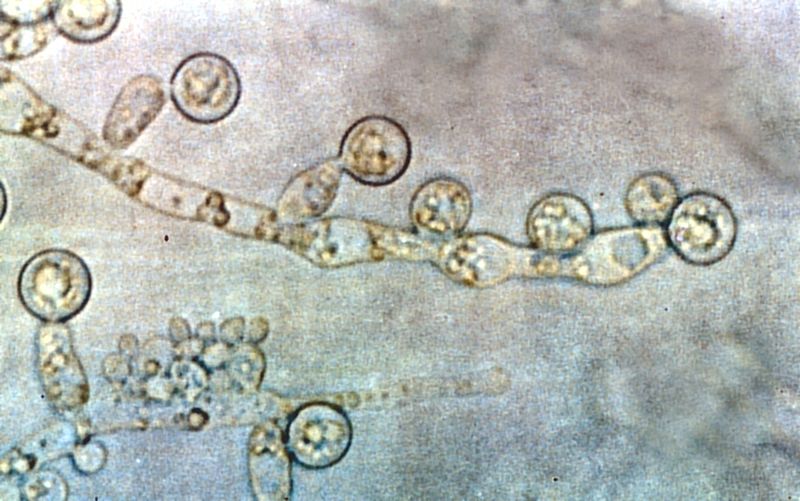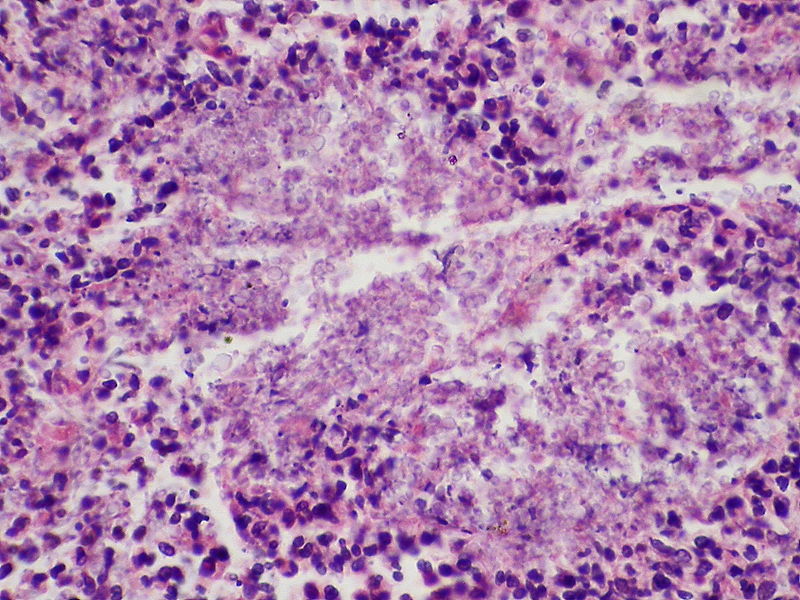What is the Difference Between Candida Albicans and Candida Auris
Table of Contents
The key difference between Candida albicans and Candida auris is that Candida albicans is an opportunistic commensal pathogen while Candida auris is a nosocomial pathogen.
Candida species are the most common causes of fungal infections. They are human pathogens. Candida species are responsible for both superficial and systematic infections. Five species are responsible for over 92 % of cases, while 13 species rarely cause infections. Some Candida species include Candida albicans, Candida glabrata, Candida parapsilosis, Candida krusei, and Candida auris.
CONTENTS
1. Overview and Key Difference
2. What is Candida Albicans
3. What is Candida Auris
4. Similarities – Candida Albicans and Candida Auris
5. Candida Albicans vs Candida Auris in Tabular Form
6. Summary – Candida Albicans vs Candida Auris
What is Candida Albicans?
Candida albicans is an opportunistic commensal pathogen. It is the pathogenic yeast commonly found in the human gut. It can also survive outside the human body. C. albicans is present in the gastrointestinal tract and mouth in many healthy individuals. Thus, this fungus usually becomes pathogenic in immunocompromised people under a variety of conditions. C. albicans is the most common Candida species that causes candidiasis. It has been reported that systemic candidiasis due to C. albicans causes a mortality rate of 40%. Moreover, this fungus is also responsible for invasive candidiasis. Some new studies indicate that C. albicans can also cross the blood-brain barrier.

Figure 01: Candida albicans
C. albicans is normally used as a model organism for fungal pathogens. It undergoes morphological switching between yeast and hyphal forms (filamentous cells). Therefore, it is called a dimorphic fungus. C. albicans exists as haploid, diploid or tetraploid. The diploid genome size is around 29 Mb. Approximately 70 % of the protein-coding genes of Candida albicans have not yet been characterized. C. albicans causes both superficial local infections (mouth, vagina) and systematic infections (immunocompromised people). It also plays a role in Crohn’s disease. It is identified that people suffering from Crohn’s disease are more likely to be colonized by C. albicans. Antifungal medications such as amphotericin B, echinocandin, fluconazole, nystatin, clotrimazole are effective against C. albicans.
What is Candida Auris?
Candida auris is a species of Candida, which is a nosocomial pathogen. This fungus was first identified in 2009. It is a species of ascomycetes fungi. C. auris grows as a yeast. It does not undergo morphological switching between yeast and hyphal forms. This fungus shows multidrug resistance. There is no evidence it can grow in the gastrointestinal tract or oral cavity. It mainly colonizes the skin. C. auris can cause invasive candidiasis. Therefore, Candida auris infects the bloodstream, central nervous system, and internal organs.

Figure 02: Candida auris
Candida auris has a genome size of 12.3 to 12.5Mb. The genome also has higher G-C content (44.5-44.8%). The treatment for C. auris infection is complicated. However, triazoles (posaconazole, itraconazole and isavuconazole) show better activity against Candida auris.
What are the Similarities Between Candida Albicans and Candida Auris?
- Candida albicans and Candida auris are two types of fungal species.
- They belong to the genus Candida.
- Both cause invasive candidiasis.
- They can form biofilms.
- Both express virulent factors common to the genus Candida.
What is the Difference Between Candida Albicans and Candida Auris?
Candida albicans is an opportunistic commensal fungal pathogen, while Candida auris is a nosocomial fungal pathogen. So, this is the key difference between Candida albicans and Candida auris. Moreover, Candida albicans undergoes morphological switching between yeast and hyphal forms, while Candida auris does not undergo morphological switching between yeast and hyphal forms.
The below infographic lists the differences between Candida albicans and Candida auris in tabular form for side by side comparison.
Summary – Candida Albicans vs Candida Auris
Candida albicans and Candida auris are two types of Candida species that cause invasive candidiasis. Candida albicans is an opportunistic commensal pathogen, while Candida auris is a nosocomial pathogen. Thus, this is the key difference between Candida albicans and Candida auris.
Reference:
1. Taissa Vila, et al. “Comparative Evaluations of the Pathogenesis of Candida Auris Phenotypes and Candida Albicans Using Clinically Relevant Murine Models of Infections.” MSphere, 26 Aug. 2020.
2. Turner, Siobhán A, and Geraldine Butler. “The Candida Pathogenic Species Complex.” Cold Spring Harbor Perspectives in Medicine, Cold Spring Harbor Laboratory Press, 2 Sept. 2014.
Image Courtesy:
1. “Candida albicans 2” By GrahamColm – Own work (CC BY-SA 3.0) via Commons Wikimedia
2. “Candidiasis (5494228352)” By Yale Rosen from USA – CandidiasisUploaded by CFCF (CC BY-SA 2.0) via Commons Wikimedia
ncG1vNJzZmivp6x7pbXFn5yrnZ6YsqOx07CcnqZemLyue9ahmK1lmah6tbTEZpuinpaav6a6wp5km52krLKmuoycmKecmZmubq3Lm6CcmZ6oeqK6w2aamqaUnrGiecCuqaKrXw%3D%3D